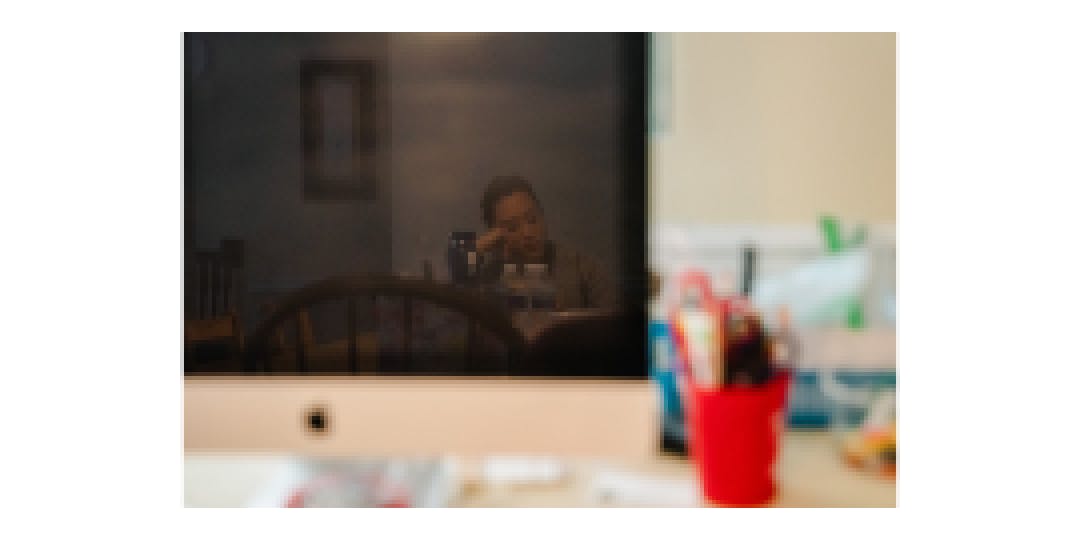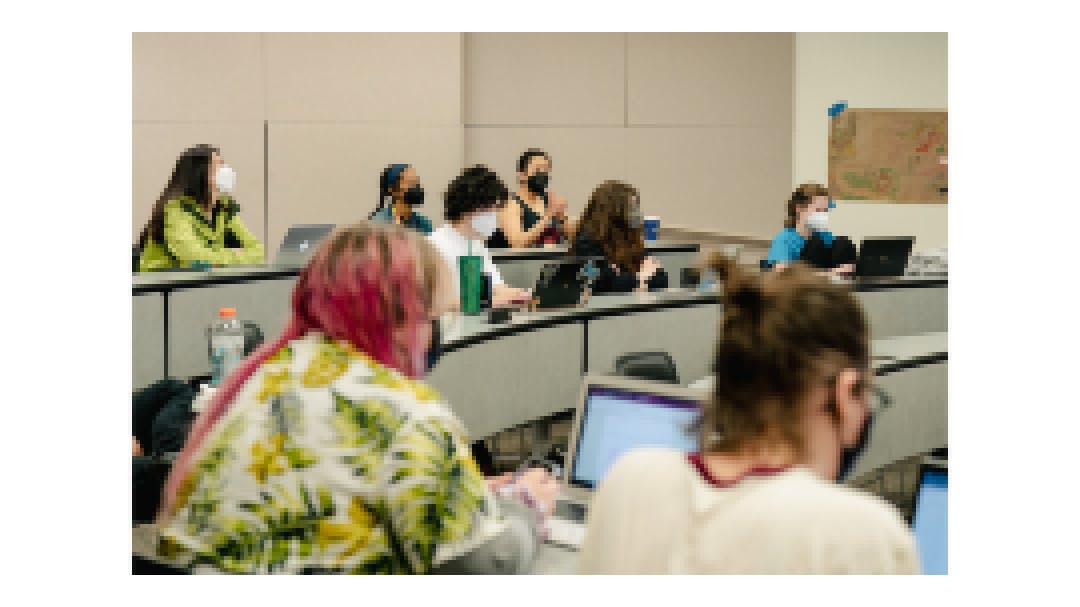The Illusion of Danger | EdSurge News

Jackie takes Richard’s strains. She perches on an invisible sofa, watching an invisible tv. When her scene associate calls to her, she barely deigns to reply. Each time they run the strains, Jackie’s expression sharpens. She’s extra dominant, bored, disdainful. Jackie hurls Richard’s phrases like razors wrapped in silk.
After leaving school, Jackie spent a number of years working. The jobs she might discover and not using a school diploma didn’t pay that nicely. “I was really depressed,” she remembers. “I felt purposeless. I felt useless.”
Then, Jackie met a pal of a pal who performs a mode of acrobatics known as tricking. It combines strikes from gymnastics and taekwondo. The artwork type caught Jackie’s consideration. She didn’t know something about gymnastics, however she had practiced taekwondo since childhood.
Jackie discovered a tricking gymnasium close to her house in Maryland. She known as the proprietor and found they shared a number of associates. Jackie signed up for personal classes. She met new individuals dedicated to training martial arts and stunts, aspiring actors and performing artists who spend their free time creating unbiased movies. Their ardour inflated her personal.
“It totally drove me forward into being like, OK, I definitely wanna follow my dreams and become a stunt-martial-arts-dancer-whatever-actor,” Jackie says.
Students take turns performing their renditions of “The Lover.” One pair is tender: a younger couple realizing they’ve damage one another for the very first time. Another pair is exasperated: longtime companions rehashing the identical argument for the millionth time.
When Jackie and her associate carry out, they betray no affection. Whatever love they as soon as shared is misplaced. There is nothing left to salvage. They want a clear break.
When Jackie discovered tricking, she noticed a means out.
“Eff this, life is way too short,” Jackie informed herself. “I have to start somewhere.”
Sacrifice
When Jackie was in seventh grade, she requested her mother to purchase her a jean skirt from Abercrombie & Fitch. It value $60.
That was so much of cash for Jackie’s household. The Kims moved from Seoul, South Korea, to the U.S. when Jackie was 11, in 2004. In Maryland, their funds felt tight. Jackie says she has labored since she was in eighth grade, when she began incomes a couple of bucks an hour as a bus lady in a restaurant.
“I don’t think that was legal, but whatever. That’s how much I didn’t wanna ask my parents for money,” Jackie says.
But … that skirt. It was stylish. It was Abercrombie. It would possibly assist her slot in at college, the place she struggled to make associates—focused by bullies who picked on her accent and her outfits.
So Jackie requested her mother to purchase it.
“She said, ‘Do you really, really, really want this?’” Jackie remembers. “And she asked me as I kept touching it, you know, I kept looking.”
Jackie did need it. Still, she informed her mother to not fear. They might depart the shop if the skirt was too costly.
But Jackie’s mother replied, “OK. If I get this, promise you’ll share it with your sister.”
“And she got it for me, and I am so grateful. I still can’t forget that—that is forever embedded in my brain—how much immigrant parents sacrifice for you,” Jackie says.

Photo by Shuran Huang for EdSurge.
The first time Jackie tried school, her dad and mom paid for her tuition. When she returned to review appearing, she took on that accountability. She thought-about making use of to well-known theater applications, like these at Yale and Juilliard. But it was cheaper and simpler to remain native. So she enrolled at Howard Community College.
To pay her payments, she works two workplace jobs that draw on her nursing coaching, helping a chiropractor and an acupuncturist. She’s making an attempt to avoid wasting up cash for when it’s time to make an enormous transfer for her profession, possibly to New York, possibly to L.A. She researches what it prices in these cities to pay for hire, utilities and groceries.
“People are like, ‘Oh, you can just go with, like, $5,000.’ I’m like, ‘I’m not gonna do that,’ Jackie says with a laugh. “I just would like to have enough savings to the point where I can pay off my loans comfortably, and to live somewhere comfortably for eight months at least.”
When she’s not at school or at work, Jackie acts. In the artistic initiatives she makes with associates, she usually blends dry humor with expert stage fight. In one quick movie, “Tea Time,” she fistfights a sequence of unhealthy guys whereas searching down a misplaced buddy, finally coming head to head with a stunning nemesis. In one other, a “gangster reboot” of a basic legend, known as “Mulan: An East Side Story,” she performs the title character, singing, dancing and usually kicking ass.
Study, work, act—repeat. Jackie is at all times drained. Ambition doesn’t sleep.
“She physically works very hard in the family, always moving around,” says Brian Kim, Jackie’s youthful brother, who lives with Jackie and their dad and mom. “Her daily schedule hours, I feel like they’re pretty intense, ’cuz I’m lucky if I see her in the morning, and I’m lucky if I see her at night.”

Photo by Shuran Huang for EdSurge.
In her every day blur, Jackie paused simply lengthy sufficient to note a chunk of mail. She acquired a pamphlet from the University of Maryland, Baltimore County. It inspired her to return, and to complete incomes a bachelor’s diploma. The letter promised that if Jackie utilized quickly, the college would waive the applying payment of $50.
“And I was like, ‘Sold,’” Jackie remembers with amusing. “I was gonna go back anyways, but if you’re waiving the $50? Great.”
That’s precisely the response that leaders on the college have been hoping for. In summer season 2020, they realized that the COVID-19 pandemic had created circumstances that may draw again adults who had left school with out ending. During six hectic weeks, directors created a advertising marketing campaign known as Finish Line, dug up information of former college students who had earned at the very least 60 credit and mailed them invites to return to the establishment.
One of these college students was Jackie. With freshly earned group school theater credit, she transferred again to the University of Maryland, Baltimore County.

This time round, as a substitute of dwelling in a dorm, Jackie lives together with her mother, dad and brother 20 minutes away. Instead of thumbing by means of textbooks, she memorizes scripts. She doesn’t cry at evening.
The campus feels completely different. When Jackie first arrived a decade in the past, the performing arts constructing didn’t exist. By the time she returned, there it was, shining on the high of the hill.
Safety
Once per week, Jackie trains to wield a sword. She cuts and parries, studying strikes that her teacher refers to as “Hollywood swashbuckling.”
She additionally practices unarmed fight, abilities used to carry out fights, shoves and falls on stage and on display screen.
“No weapon, just punching, kicking, hitting—which is like natural to me, ’cause I’ve done it so much,” Jackie says.
The class teaches college students about partnership, communication and “how to work safely while creating the illusion of danger,” says Jenny Male, an affiliate professor of theatre at Howard Community College and an authorized instructor with the Society of American Fight Directors. When actors take a punch or seize a knife, she explains, their job is to “keep it safe, yet exciting.”






